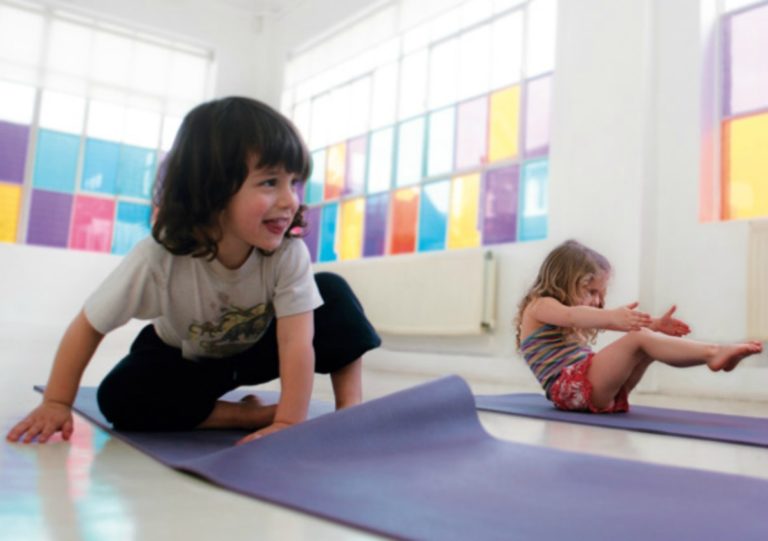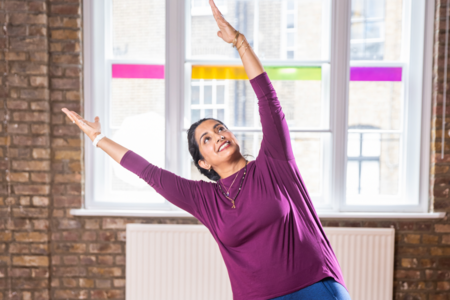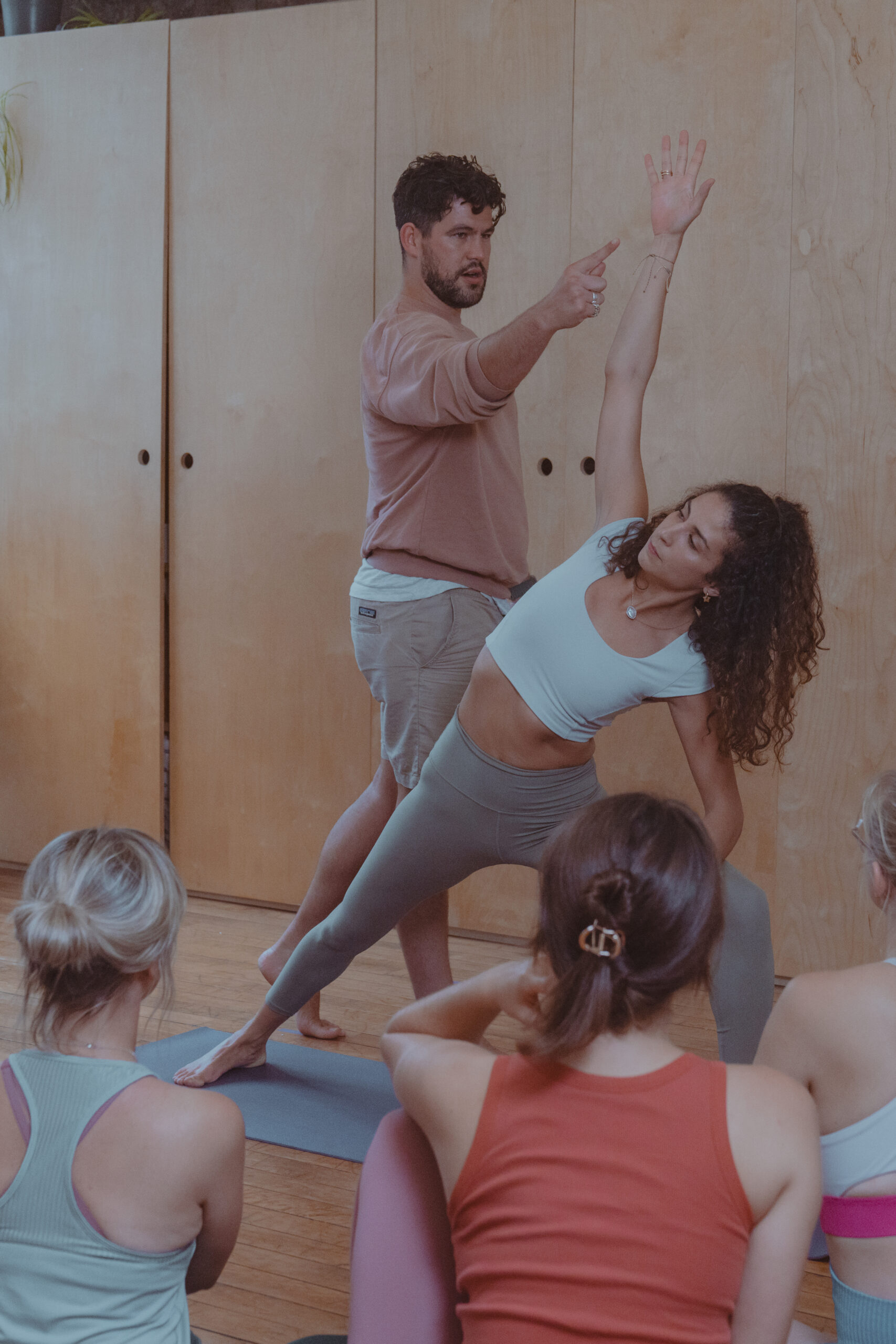Ahead of her specialist yoga teacher training – ‘yoga for children with autism + special needs’ – Shawnee Thorton Hardy shares an in-depth list of how yoga can benefit children with autism or other special needs.
As the identification of autism is on the rise, now 1 in 40 children according to the Center for Disease Control (CDC), parents, educators and other professionals continue to be faced with the challenges of supporting children with Autism Spectrum Disorder (ASD) in the home, school and community settings.
Common challenges children with ASD face are difficulty with expressive and receptive communication, sensory integration deficits and social/emotional challenges (understanding and recognizing facial expressions, social cues and their emotions as well as emotions of others). Children with ASD can exhibit a broad range in these areas, some having more difficulty in one or more areas than another. Many children ASD may also experience heightened levels of anxiety.
Recently, yoga has become a topic of interest as an intervention and supplemental support for children with ASD. There are limited studies on yoga and the effects on children with autism, however, the studies that have been done suggest that yoga can be of significant benefit to children with ASD.
In addition to benefits typically associated with yoga such as increased strength, balance, coordination and flexibility, benefits such as increased social-emotional skills, language and communication, body awareness, self-regulation, focus and concentration and a reduction in anxiety, impulsive, obsessive, aggressive and self-stimulatory behaviors have also been noted.
1 – Increased social-communication skills:
The results of one study published in the International Journal of Yoga Therapy showed an improvement in imitation skills. The study indicated that yoga may offer benefits as an effective tool to increase imitation, cognitive skills and social-communicative behaviors in children with ASD. In addition, children exhibited increased skills in eye contact, sitting tolerance, non-verbal communication and receptive communication skills (Radhakrishna, S., 2010).
The ability to understand ones actions and imitate those actions are directly correlated to the development of social-communication skills. When practicing yoga poses and breathing strategies, children learn the poses and breathing through imitating the actions and behaviors of the adult. This also supports children’s ability to sustain joint attention, something that can be a challenge for children with ASD. Visualization, guided imagery and repetition of vocabulary with the use of visual aids and images can also support development of language and vocabulary.
2 – Awareness and expression of emotions:
Not only can the practice of yoga bring more awareness to social cues such as facial expressions, actions and social behaviors but it can also bring more awareness to children’s emotions and how they are feeling. Because children with ASD often have difficulty with expressive and receptive communication, they may act out their emotions in unexpected or inappropriate ways.
Breathing strategies can be taught to children with ASD in order to release difficult or uncomfortable emotions such as anger, frustration or anxiety in more healthy and constructive manners. Providing an outlet for children with ASD to express their emotions gives them the message that it’s OK to feel these emotions and when expressed constructively can support them in feeling better emotionally.
3 – Reduced anxiety:
Many children with ASD experience heightened levels of anxiety. This can significantly affect their sleep, mood, behavior and health. Due to difficulty with communication, sensory integration deficits and a variety of other challenges, children with ASD can be in a constant state of anxiousness. This state of anxiousness if often referred to as the fight/flight mode. When children are in the fight/flight mode, cognition and communication goes down and they tend to move into chest breathing or hyperventilation, which can exacerbate their anxiety.
Specific breathing strategies can be taught to support children with ASD in reducing anxiety and soothing their nervous systems. The practice of mindful breathing, guided imagery and poses that calm the nervous system can support these children in developing coping skills, self-regulation skills and more effective responses to stress, both emotionally and physically. Calming their nervous systems and releasing tension in their minds and bodies supports better sleep, digestion, mood, behavior and overall health and well-being.
4 – Reduction in challenging behaviors:
Because of the many difficulties children with ASD face in areas of language and communication, expression of emotions, sustaining attention and sensory integration, they may display challenging behaviors. A study about yoga and improving behavior was recently published in the American Journal of Occupational Therapy. Assessment of challenging behaviors was recorded before and after the yoga intervention and a significant impact on behaviors among children with ASD was noted.
The results of the study showed improvement of behaviors in the children with autism who practiced yoga consistently over a 16-week period (Koenig, Buckley-Reen & Garg, 2012). A combination of breathing strategies and yoga poses can support children with ASD not only in reducing anxiety, which can directly impact mood and behavior, but can also support children with ASD in developing self-regulation and coping skills.
Many children with ASD experience sensory integration difficulties. Sensory integration refers to how we use and process external stimuli from the environment around us as well as internal stimuli within our own bodies. “Self-regulation is the ability to self-organize, to control one’s activity level and state of alertness as well as one’s emotional, mental or physical responses to sensations” (Smith and Gouze 2004).
Difficulty with self-regulation affects children’s mood, behavior, energy level and response to environmental stimuli. Specific poses and breathing strategies can be taught to children with ASD that provided proprioceptive and vestibular input from the two “hidden” sensory systems in order to support sensory integration and self-regulation. Development of self-regulation skills can improve children’s impulsive, aggressive and acting out behaviors significantly.
5 – Increased body awareness:
Many children with ASD may have limited body awareness. By teaching and identifying body parts through yoga and movement of the body, children can develop a greater sense of body awareness. Poses that provide proprioceptive and vestibular input also support body awareness. Directional concepts taught in yoga such as up and down and left and right are also helpful concepts in developing a greater sense of body awareness.
6 – Positive sense of self:
Along with the many benefits listed above, the practice of yoga can also support children with ASD in developing self-confidence and self-esteem. Balancing poses and standing poses in particular are exciting and powerful poses for children with ASD to practice. Whether it’s a standing, balancing or seated pose, any pose can be modified to support the ability of the child in order to build up the child’s self-esteem and help the child feel successful.










